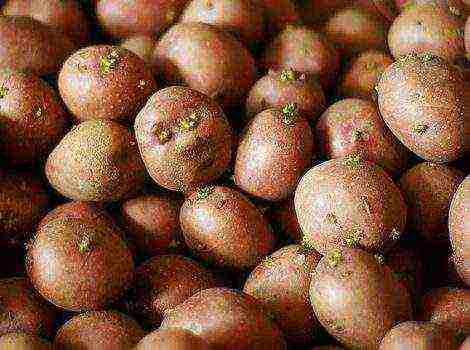Content
To get a rich harvest, you need to properly cultivate the land. Potatoes are a capricious crop and need deep plowing of the soil before planting. We learn about the methods and techniques of plowing, as well as the timing of digging up potatoes in the article.
A certain amount of time must pass from the moment of planting to the moment of harvesting. And this time depends on several factors: the selected variety, the time of planting the crop, weather conditions. It is difficult to say exactly the exact time.
There is some dependence of the harvest: if the potatoes were planted in the end of April, then you need to dig it until early August... However, according to statistics, a favorable time for planting is the month of May and you need to dig up potatoes in early September. Although, on average, harvesting begins from mid-August.
So when digging up potatoes, you should know for what purposes the vegetable will be used. If you need a young potato immediately for cooking, then you need to dig it out already at the end of July.
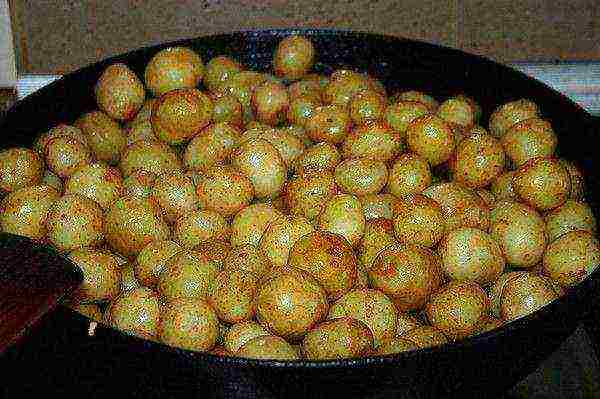
If the root crop must be stored all winter, then early harvest is not recommended. The peel should become coarser, otherwise the potatoes will quickly deteriorate and rot.
External signs of ripening potatoes
Potatoes are plants that are grown in large quantities relative to other crops. It is important not to miss the harvest time and dig up the root crop in time... It is important to be able to understand by external signs that the vegetable is ripe.
The main signs of ripening potatoes include:
- shrubs dry up, wither and turn yellow;
- the peel of the dug potatoes coarsens, becomes thicker and does not peel off well (unlike young potatoes);
- tubers have accumulated enough starch to survive for a long time and survive the winter period. It is easy to find out, you need to drop iodine on the pulp. If the pulp has become lilac, then the potatoes are ready for storage;
- tubers when harvested easily detach from stems and roots.

Why harvest on time
To keep the tubers for a long time, the peel should be roughened... It is also impossible to overexpose a vegetable in the ground for the following reasons:
- potatoes are damaged by harmful insects or diseases;
- tubers dry and lose weight;
- fruits rot from moist soil;
- the vegetable is frozen from a sharp onset of cold snap.
How to dig potatoes
There are several ways to dig up potatoes. For this, they often use either ordinary garden tools - a shovel or a pitchfork, or special agricultural techniques.
At the same time, digging by hand is a rather laborious process, especially for those who have health problems. For processing large areas, it is better to use a walk-behind tractor.
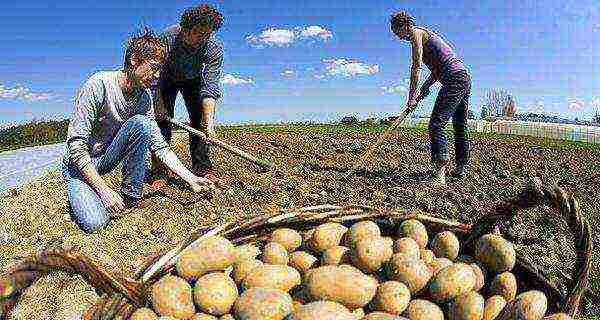
Motoblock
Cleaning with agricultural equipment can be done after all tops on the site will be cut... After 2-3 days, you can start digging up the root crop.
The equipment is prepared in advance. For this, it is recommended to pay attention to the elements of rotation.They must be thoroughly lubricated with special oil, and the parts of the walk-behind tractor that will loosen the soil should be cleaned of earth, clay, stones.
Using a walk-behind tractor or digging with a motor-cultivator implies compliance with the instructions:
- shrubs must be planted in advance in one straight rowso that you do not have to maneuver equipment throughout the site;
- the distance between the rows should be 70-80 cmso that the walk-behind tractor does not damage the adjacent ridge with the wheels;
- when harvesting, it is better to use additional attachments to adjust the depth;
- you need to adjust the technique in advance so that it can dig up easily;
- in order for the wheels of the walk-behind tractor to drive evenly, it is recommended to dig out potatoes across the ridge.
Manually
You can dig potatoes by hand with a shovel or a "digger". However, such work is suitable for no more than 5 acres of land... If the garden is larger, it is better to use the technique - it is faster and more practical. Manual digging of potatoes is done as follows:
- one person digs under the tuber. To do this, you need to drive a shovel near the tuber and raise it to the surface;
- the second person collects potatoes, walking behind.
With manual labor, you can do two things at once - collect potatoes and sort them. You can leave the tubers to dry on the surface of the rows.
-
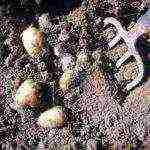
- Manual digging of potatoes is done with a shovel or pitchfork
-
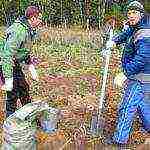
- It is more convenient when one person digs potatoes, and the second takes them out of the ground and sorts
Preparing the soil for plowing
To prepare the land for planting crops, you need to process it well, saturate it with oxygen. This requires deep tillageso that the roots and tubers develop well.
There are several methods for preparing and cultivating land:
- deep with the help of cultivators and flat cutters;
- plowing;
- with a deepening of the arable horizon.
How to prepare the soil in spring
First of all, you should understand which soil is best for potatoes. Clayy wet ones are completely unsuitable. Potatoes should not be planted in lowlands where there is a possibility of water accumulation.
The most suitable land - light, sandy, loose... Ideal if it is black soil, peat soil... If the soil is oxidized, then before planting it must be treated with a tree hall, sand with manure or compost.

Plowing depth
The choice of cultivation method depends on the land and geographic location. In almost all regions, autumn plowing is suitable for a depth 30 cm.
How to cultivate the land before planting
The first step to getting a rich harvest is enrich the soil with oxygen... Therefore, it must be loosened up. Loosening is carried out in dry weather. To do this, you need to dig the soil to a depth 15 cm.
Before planting potatoes, you need to carry out a number of procedures:
- dig the soil to a depth in advance 15-20 cmto destroy pests;
- treat the soil with special solutions for the prevention of late blight;
- enrich the soil with minerals and organics;
- a year before the planned planting of potatoes, plant siderates on the site.
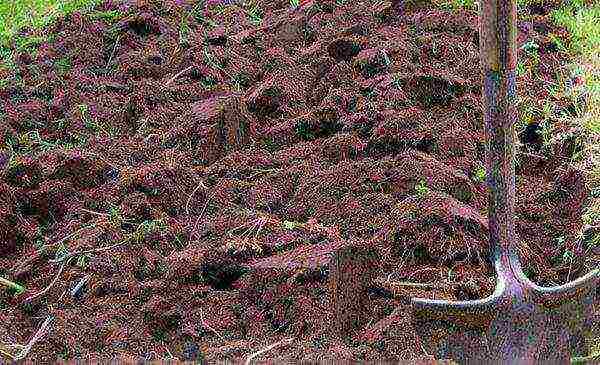
How and what to cultivate the land in spring and autumn
In the spring you need to wait until the snow has completely melted, and the soil warms up to a depth of 10cm... Land cultivation is carried out depending on its composition:
When planting potatoes, you need clear the land of weeds, insects, diseases.Apply fertilizer and level the soil with a rake.
To enrich the soil with minerals and organics, you can use one of the mixtures:
- for 1 sq.m. Mix 5 kg of humus, 100 g of ash and 50 g of nitrophosphate and add to the ground before planting;
- 5 kg of compost, 30 g of nitrophoska, and between the rows feed 20 g of ammonium nitrate and potassium sulfate.
If the soil is heavily contaminated, then it is better do without organic... When using green manure, the soil is saturated with nutrients and is a preventive method against pests.
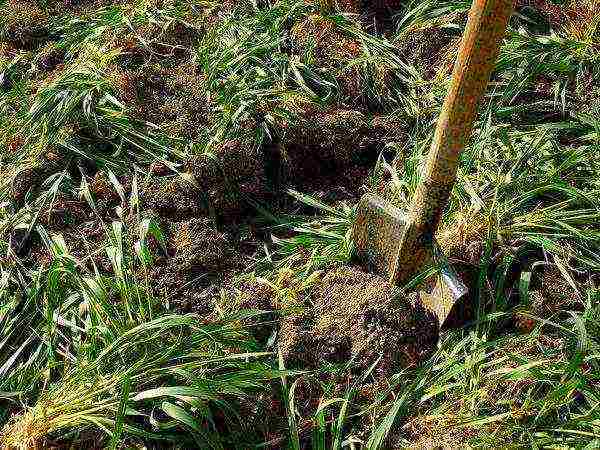
For autumn processing, you can use the method autumn plowing... It improves the arable layer of the soil, increases its ability to retain useful properties.
To increase the fertility of the land, manure can be scattered around the garden immediately after harvesting. Also, together with manure, you can feed the soil with superphosphate 30g and potassium sulfate 15g per 1 sq. M. After harvesting, the tops are recommended to be collected and burned behind the plots of the garden.
To harvest a rich potato crop, all of the above recommendations should be followed. Have a nice harvest!

